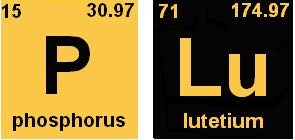2017 Chemistry Capstone Symposium
PLU Chemistry Department 
May 1st to May 5th, 2017 Chemistry Department Senior Capstone Presentations took place Monday through Friday, May 1-5,2017. The schedule of talks and abstracts is given below.
[ Monday | Tuesday | Wednesday | Thursday | Friday ]
Keynote Speaker: Curt Malloy, MPH, JD (and PLU ’88), Chief Operating Officer, Cancer Research and Biostastics (CRAB), Friday May, 4:30 pm.
All talks were held in Morken Center for Learning and Technology (MCLT), Room 103
Monday, May 1st , 2017 (Morken Center for Learning and Technology, Room 103)
1:40 pm - Welcome
1:45 pm - Characterizing the Birefringence of Oligo (ethylene oxide) Oxanorbornyl Diblock Copolymers and Homopolymers for Solid Electrolyte Supports
Rodion A. Zhuravlev, Senior Capstone Seminar
Solid polymer electrolytes are a safer alternative to the current electrolytes found in lithium-ion batteries. A diblock copolymer can be used in an electrolyte solution. The diblock synthesized was composed of one monomer with a bulky backbone and ion conductive ethylene oxide (EO) sidechain, while the other monomer consisted of a high modulus bulky region. The resulting diblock is capable of creating nanomorphologies that allow ion conductive paths to travel through, and the other block may prevent dendrites from growing. It is important to understand the diblock copolymer phase diagram for these materials, and optical birefringence (OB) can be a useful tool for measuring the transitions between different nanomorphologies found in diblocks copolymers as a function of temperature. In order to attain samples with ordered morphologies, slow solvent evaporation (SSE) and doctor blading were investigated using a diblock known to form order. The SSE technique was used to make samples for OB. SSE samples produced an average hysteresis value of 9 °C and 19 °C for doctor bladed samples, indicating that SSE provided more precise data. Diblocks were also synthesized with a longer EO (n=12) side chain with a range of mass fractions. These diblocks were prepared via SSE and OB data was acquired, but consistent ordering was not confirmed. Small angle x- ray scattering data was also measured for the polymers studied by OB as well as diblock copolymers of other EO sidechain lengths.

2:20 pm - Capture of CO2 (g) and Conversion to Methanol
Tyson Carr, Senior Capstone Seminar
Carbon dioxide is a greenhouse gas which is increasing in atmospheric concentration-a trend with possibly catastrophic effects. A strategy to combat this trend has been proposed which involves trapping CO2 emissions at their source, and/or drawing CO2 out of the atmosphere, known as carbon capture. An extension of this strategy involves use of the captured CO2 as a reagent to produce methanol (for fuel as well as other purposes). This review examines some of the chemical and technological barriers to making this strategy viable. Three primary barriers are examined: capturing CO2, producing the hydrogen gas necessary to convert CO2 to methanol, and catalyzing the methanol conversion reaction.

2:55 pm - Conformational Changes in Shikimic Acid
Abby Kheriaty, Senior Capstone Seminar
The conformational changes of the molecule shikimic acid were studied at 300K, 325K, and 350K with a 23mM solution of shikimic acid in D20 using proton NMR spectra. Long range coupling was determined for all of the protons in the shikimic acid compound. Overall, as the temperature that the proton spectra were taken increased, the coupling constants of the protons decreased leading to the conclusion that the peaks began to coalesce at higher temperatures.

3:30 – 3:40 - Break
3:40 pm - A Headspace Solid Phase Microextraction-Gas Chromatography-Mass Spectrometry Method for Analysis of Acrylonitrile Migration from Styrene-Acrylonitrile Cups
Christian Rude, Senior Capstone Seminar
Acrylonitrile is a carcinogenic monomer that is in styrene-acrylonitrile polymer during its manufacturing process, and can migrate from the polymer to foods and liquids the polymer contacts. A headspace solid phase microextraction (SPME) gas chromatography- mass spectrometry (GCMS) method was developed to analyze the concentrations of acrylonitrile in solution after submerging the polymer in solution for given amounts of time. At room temperature a limit of detection of 2 ppb, and limit of quantitation of 6 ppb was established. Acrylonitrile concentrations in solution after exposure to styrene acrylonitrile solution ranged from 6 ppb- 250 ppb.

4:15 pm - Colorimetric Biosensing Assay using Silver Nanoparticles for Detection of Aptamers and other Biological Targets
Katie Cameron, Senior Capstone Seminar
The purpose of this research is to recreate a colorimetric detection assay similar to literature and use silver nanoparticles instead of regularly used gold particles to detect DNA and other biological targets. to make this process cheaper/easier to perform. The basic experimental method includes the synthesis of silver nanospheres that are attached to a desired ligand and perform the detection assay with the newly made nanoparticles. Once the initial experiment is done, further research will be in finding the optimal conditions for the detection assay as well as finding the LOD and LOQ for the assay. As of now, there are not any conclusive results to report.

1:45 pm - The Synthesis of Functionalized Benzofulvenes and their Possible Application toward Thioredoxin Reductase Inhibition and Cancer Treatment
Katie Caspary, Senior Capstone Seminar
The thioredoxin system, comprised of thioredoxin (Trx) and thioredoxin reductase (TrxR), is a key component for oxidative stress control within the intracellular environment. This system has been linked to potential oncogenic events through the manipulation of reactive oxygen species (ROS). Benzofulvenes have been shown, via docking software, to bind to the active site of TrxR. Implications of active inhibition of TrxR would result in Trx not being reduced, meaning neither would the ROS within that transformed cell, leading to apoptosis. Eight functionalized benzofulvenes have been synthesized for testing against TrxR. Reaction yields for the benzofulvenes has been improved remarkably through the use of lanthanum chloride as a key carbonyl activator in the first synthetic step. Future research for this project includes in-vitro assay testing of the benzofulvenes against TrxR to determine the level of inhibition.

2:20 pm - Synthesis of Silver Nanoclusters with Potential Biomarker Applications
Shelby Murdock, Senior Capstone Seminar
Metal nanoclusters have been widely researched due to their stability and photoluminescent properties, gold in particular. Research on silver nanoclusters can help elucidate photoluminescent mechanisms that are still not understood in gold nanoclusters. Silver nanoclusters may also be a better alternative to gold for potential biomarker applications. This project seeks to explore how altering the ligand used to form silver nanoclusters affects the photoluminescence and stability of particles. The alternate ligand used, 4-isopropylbenzenethiol, has not successfully replicated the silver nanoclusters formed with 2,4-dimethylbenzenethiol.

2:55 pm - Synthesis of an N-Methylpiperazino Benzofulvene Derivative as a Potential Thioredoxin Reductase Inhibitor
Tristan Underwood, Senior Capstone Seminar
Thioredoxin reductase 1 (TrxR) overexpression is found to be an important contributor in tumor progression. Thus, the inhibition of TrxR is suggested to have many applications in cancer therapy and has become an important clinical goal. Computational modeling has shown that compounds with a benzofulvene core have high nanomolecular binding affinity to TrxR and would make ideal competitive inhibitors. The goal of this research was to synthesize an N-methylpiperazino benzofulvene derivative, which is theorized to have the highest nanomolcular binding affinity to TrxR. As a result, the N-methylpiperazino benzofulvene was successfully synthesized in trace amounts as indicated via gas chromatography–mass spectroscopy.

3:30-3:40 - Break
3:40 pm - Modifying the Surface of Carbon Electrodes with RuOx Nanoparticles to Study the Rate of Electrochemical Charge-Transfer Kinetics
Ashlee McGovern, Senior Capstone Seminar
If a thin film of RuOx is deposited on the surface of graphite materials, then the redox kinetics of the electrode will reflect platinum-like behavior because the d-orbitals in the transition metal have a similar density of electronic states as those found in the redox probe molecules. Utilizing chemical vapor deposition, approximately 1 μm of graphite-like material was deposited onto quartz slides by pyrolyzing dilute benzene vapor at 1000 °C. A few nanometers of ruthenium oxide nanoparticles were deposited on the surface of the graphite by decomposing RuO4 around 5 °C. Electrochemical experiments on the carbon electrodes were conducted using 10 mM K3[Fe(CN)6] in 1 M KCl and 10 mM Fe(NO3)3 in 1 M HClO4 electrolyte solutions along with an Ag/AgCl reference electrode. Both redox probes, Fe(CN)63-/4- and Fe(H2O)63+/2+, in the electrolyte solution follow inner-sphere electron transfer mechanisms. The voltammograms of the RuOx-coated electrodes showed significant narrowing between the oxidation and reduction peaks in both electrolytes. When comparing the CVD-C rate constant to the 250° C RuOx-on-C, the rate constant increased by a factor of 34 and 55 in Fe(CN)63-/4- and Fe(H2O)63+/2+ respectively. The standard heterogeneous rate constant in Fe(CN)63-/4- was 0.51 cm s-1 and 1.9 x 10-3 cm s-1 in Fe(H20)63+/2+ for the 250° C RuOx-on-C electrodes, which are both comparable to platinum under similar conditions. As the RuOx nanoparticles are heated they become more ordered via crystallization leading to higher electronic conductivity.

4:15 pm - Synthesis of Acetylsalicylic Acid-Based Iron and Molybdenum Complexes as Neo-Anticancer Agents
Brandon Tabor, Senior Capstone Seminar
Currently there are few if any cost effective anti-cancer agents that mitigate side effects for cancer patients. Cisplatin is the most common form of metal based anti-cancer agents; however it comes with a high cost to the patient. In this study, iron based and newly synthesized molybdenum based anti-cancer agents were produced and characterized. The hope is that these new compounds may later exhibit anti-cancer behaviors similar to cisplatin but at a much lower cost both financially and to the health of the patient.

1:45 pm - The Synthesis and Release Studies of Camptothecin Prodrug-loaded Microparticles
Bryan Gutierrez, Senior Capstone Seminar
Camptothecin (CPT) is a highly potent drug against cancer cells that failed clinical trials due to high toxicity and poor solubility. CPT makes an excellent candidate for chemical modifications/formulation in order to improve its physico-chemical properties. Our experimental method involved the synthesis of several prodrugs of CTP and then loaded them into gelatin microparticles. The fabrications of gelatin microparticles (MPs) were loaded with different CPT prodrugs, utilizing the water-in-oil emulsification technique. Several batches of microparticles were prepared, characterized and tested for drug release. We ran in vitro hydrolysis studies using three sodium phosphate buffers with pH values 6.6, 7.0, 7.4 (representative pH of tumor, lung, and physiological/extracellular matrix) and monitored by LC/MS. The release profile was done through a calibration curve and taking the data from under the curve to calculate drug release over time. The results showed that CPT release rate and amount was faster at higher pH. In addition, a higher degree of crosslinking (higher volume of glutaraldehyde) allowed more of CPT to be released in the phosphate buffer.

2:20 pm - The Rotation of Benzofulvenes’ Exocyclic Double Bond Effects on Conjugation
James Okubo, Capstone Senior Seminar
Imperfections in the two-dimensional structure of graphene-based electrodes have led to reduced chemical capacitance. Recent density functional theory calculations have shown that the capacitance can be improved via structural and morphological features of the electrode. The structure of the organic compounds known as benzofulvenes may act as a model for graphene. Rotation about the exocyclic double bond of benzofulvenes may change the conjugation of the overall molecule. We have observed that an increased dihedral angle reduces overall conjugation of the molecule as observed from NMR and crystal structure analysis. We determined the dihedral angle with crystal structure analysis, and utilized proton 1H NMR to monitor the shift change. Using an in-house olefination reaction, we synthesized a variety of complex benzofulvenes, where we were able to alter the dihedral angle.

2:55 pm - Pilot Study of Continuous-Greenhouse-Gas Flux Sampling Technologies in a North Olympic Peninsula Salt Marsh
Chloe Skidmore, Capstone Senior Seminar
Research suggests that wetlands may play an important role in regulating the effects of global climate change. Addressing significant uncertainties regarding greenhouse gas (GHG) fluxes has the potential to improve current global models on climate change. Standard methods of acquiring simultaneous fluxes of, CO2, N2O and CH4 are labor-intensive and temporally limited, making it difficult to efficiently gather data. In this pilot study, we utilized a Picarro G2508 cavity ring-down spectrometer and an automated Forerunner soil-flux AC-001 Autochamber to obtain continuously sampled data on the salt marsh located at Pacific Northwest National Laboratory’s (PNNL) Marine Science Laboratory (MSL) in Sequim, WA. Throughout the study, we also developed a calibration protocol and gas-analyzer operation method, leading to the formation of a Standard Operating Procedure (SOP) for analysis. Preliminary results indicate that the system is capable of obtaining and analyzing trace amounts of GHG in laboratory and field settings. The SOP will become part of MSL’s quality program for use in future experiments.

3:30-3:40 - Break
3:40 pm - N-substituted nitrosoguanidine Diels-Alder adducts: Synthesis and substituent effects on the rates of retro-Diels-Alder reactions
Miles Radford, Capstone Senior Seminar
Guanidines are a familiar functional group due to their presence in the amino acid arginine. Biochemically, the guanidine found in arginine can undergo oxidation via nitric oxide synthase (NOS) to produce nitrosoarginine. This reactive species is inherently unstable and its decomposition pathways give rise to a variety of biochemical processes. If trapped by water, nitrosoguanidines hydrolyze to form ureas and release nitroxyl (HNO). Due to this instability, it is proposed that nitrosoguanidines trapped as Diels-Alder adducts of 1,3-dienes could be a suitable prodrug strategy. Upon the cycloreversion under biological conditions, hydrolysis could liberate urea-based pharmaceuticals along with nitroxyl, a biologically active vasodilator and vasorelaxant. This study focused on the synthesis of various N-monosubstituted and N,N′-disubstituted nitrosoguanidine Diels-Alder adducts and monitoring their retro Diels-Alder reactions by 1H-NMR spectroscopy in a mixture of DMSO-d6 and D2O against an internal standard. This study constitutes the first systematic effort at assessing the effects of nitrosoguanidine substitution on the retro-nitroso-Diels-Alder reaction.

4:15 pm - Development of Nanorods for Large Stokes Shift in Luminescent Solar Concentrators
Caleb Chandler, Capstone Senior Seminar

1:45 pm - What Role Does Chromatin Play in Nuclear Envelope Rupture? Optimizing the Isolation of Micronuclei from the MCF10A Cell Line
Ashley Connors, Capstone Senior Seminar
The structure and dynamics of the nuclear envelope influences cellular genomic stability. For reasons yet to be elucidated, the nuclear envelope can rupture and repair in primary nuclei. However, in micronuclei (MN), the nuclear envelope cannot repair itself. MN, which result from the recruitment of the nuclear envelope to chromosomal fragments or lagging chromosomes, are associated with increased genomic instability and are common in cancer cells. Ruptured MN can neither replicate their DNA nor repair any damage that has occurred. This can increase the likelihood of both mutations and aneuploidies in daughter cells. The non-tumorigenic MCF10A cell line has been found to generate MN that disrupt at significantly lower frequencies than those in tumorigenic cell lines. Since different chromosomes interact with the nuclear lamina in different ways, our hypothesis is that the identity of the chromatin sequestered in the MN influences the rate of rupture. To test this hypothesis, it is necessary to isolate and sequence the MN. We decided to adapt existing protocols, modifying the hypotonic lysis buffer components as well as the mechanical lysis. The current version of the lysis procedure pre-treats cells with nocodazole and cytochalasin D in addition to including the drugs in the lysis buffer. Cells are then incubated on ice in a detergent-less PIPES buffer prior to syringing the sample through a needle several times. Using this protocol, we achieved a clean lysis rate of about 15%, which will allow us to isolate enough MN to sequence and perform other studies on.

2:20 pm - Synthesis of Hantzsch 1,4-Dihydropyridines for use in the Conjugate Reduction of α,β-Unsaturated Aldehydes
James-Victor Alvarez, Capstone Senior Seminar
Hantzsch pyridines have demonstrated potential as conjugate reducing agents for ,-unsaturated carbonyl compounds. These compounds have also drawn interest in their functional similarity to biological reducing agents such as NADH. Hantzsch pyridines exhibit the ability to facilitate asymmetric transfer hydrogenation (ATH) reactions, allowing for enantioselective reductions.This study focuses on the synthesis of various 1,4-dihydropyridines in an attempt to verify cinnamaldehyde reduction efficacy via microwave reaction. 1,4-dihydro Hantzsch pyridines were synthesized from corresponding β-ketoesters, ammonium acetate, and formaldehyde according to literature protocol.

2:55 pm - Luminescence of `{`Ag25(SPhMe2)18`}`-
Khrizelle Atienza, Capstone Senior Seminar
Metal nanoclusters, such as silver and gold have been studied as tools for applications such as biological markers and solar energy.1 Recently, these metal nanoclusters have been getting more attention where gold nanoclusters have a stable base to be applied for practical applications. Silver nanoclusters, however mimic gold nanoclusters in terms of color, absorbance, and fluorescence. We follow a ligand exchange synthesis of [Ag25(SPhMe2)18]– where we see absorbance at 485 nm and fluorescence at 820 nm similar to the literature.2 From there we study the luminescence of [Ag25(SPhMe2)18]– with organic soluble thiols with 11-octadecanthiol and 11-mercaptoundeconic acid where we see a decline of the absorbance and fluorescence peak.

3:30-3:40 - Break
3:40 pm - Soil Chemical and Method Analysis for Phosphorous Levels in Determination of Early Western Settlement Lifestyles within the San Juan Island Region
Grant Schroeder, Capstone Senior Seminar
Archaeological and anthropological research lacking significant physical artifacts onsite, can use historical chemical information pertaining to phosphorous concentrations for further in-depth analyses and evaluations on project sites. This method analysis of soil sampling and UV-Vis spectrometry proved viable in determination of relative past human activities on a local homestead in the San Juan Island region.

4:15 pm - Lewis acid Catalyzed Friedel-Crafts Addition of 2-Vinylcyclopropane-1,1-dicarboxylic acid Dimethyl Ester
Rebecca Doud, Capstone Senior Seminar
Donor-acceptor cyclopropanes activated by Lewis acids via a nucleophilic ring opening mechanism have been shown to undergo Friedel-Crafts addition with a wide variety of aromatic compounds. Trials with 2-vinylcyclopropane-1,1-dicarboxylic acid dimethyl ester, catalyzed by tin triflate, were run with various activating and deactivating aromatic compounds. Time and temperature were also varied from approximately 15 to 30 minutes and 100 °C to 200 °C respectively. Reactions were conducted in an Emrys Personal Optimizer Microwave Synthesizer, and products were characterized through GC-MS and 1H and C13 NMR. Product formation favored the more strongly activated aromatic compounds tested, and resulted in a mixture of para and ortho configurations as the major and minor products. The additions of thiophene, phenyl acetate, and anisole yielded 90%, 63%, and 50% of product respectively. This is reflective of the activating strength of the aromatic compounds. With an optimized method established, the synthesis of these Friedel-Crafts products will be researched with other donor-acceptor cyclopropanes and Lewis acid catalysts.

1:45 pm - Synthesis of Novel Heteroatomic Benzofulvenes and Potential Helicene Application
Quoc Bao Huynh, Senior Capstone Seminar
Benzofulvenes have previously been shown to be catalytically active in biological systems such as the thioredoxin pathway, as well as having potential chemical capacitance through the stressing of its exocyclic bond. It is important then to understand the structure of benzofulvenes and what specific additions, such as a heteroatomic, thiophene, could have on the conjugated aromatic system. As well as what future applications it could have through increased and maximized affinity and dihedral angle through additional pathways such as the Scholl reaction. The purpose of the research was to synthesis a thienyl-benzofulvene monomer and dimer through an olefination reaction. Both derivatives were successfully synthesized and were characterized through nuclear magnetic resonance and gas chromatography-mass spectroscopy.

2:20 pm - Lewis-Acid Mediated, Microwave Assisted Reaction of Allyltrimethylsilane with Donor-Acceptor Cyclopropanes
Maddie Smith, Senior Capstone Seminar
The reaction of allyltrimethylsilane and donor-acceptor cyclopropanes has been observed, forming a cycloaddition product. A variety of Lewis acids and microwave and non-microwave conditions were investigated. The use of titanium(IV) chloride shows nearly complete conversion of the starting cyclopropane into the desired product, while scandium(III) triflate and tin(II) triflate cause side products to form. The best results are obtained heating the reaction to 100°C for 15 min in the microwave reactor. Several different cyclopropanes have reacted to form the cycloaddition product including phenyl diethyl ester, vinyl dimethyl ester and diethyl ester, phenyl dicyano, and vinyl dicyano cyclopropanes. Cyclopropanes with only one electron accepting group do not react to form the desired product. Research into the reactivities of different allylsilanes is ongoing.

2:55 pm - Long-Acting Medications: Drug-Polymer Conjugate Release Kinetics Study
Jitkanya Wong, Senior Capstone Seminar
To address problems of patients forgetting medication and the increasing pharmaceutical costs, a drug delivery method that provides a sustained, predictable rate is needed. Our method of controlling drug release rate involves attachment of drug molecules onto carrier polymers via nitroso-Diels-Alder. The release of drugs is achieved upon application of a heat trigger, which induces retro-nitroso-Diels-Alder. This research primarily focuses on discerning the effect of diene substitution on rate of retro-nitroso-Diels-Alder. For studying the release kinetics between various dienes, the concentration of the adduct and released hydrolyzed amine drug is monitored via UV-Vis spectroscopy. By plotting the integrated rate laws and applying an apparent first-order kinetic model with steady state approximation, we were able to determine the rate constants and half-lives associated with each diene. Through making the Arrhenius plot, the activation energy for each diene was also determined.

3:30 - 4:00 pm - Departmental Group Photo (Morken Atrium) and Liquid Nitrogen Dippin' Dots Preparation
4:00 pm - Keynote Speaker (Morken Center for Learning and Technology 103):
Perspectives from a Career in Global Health Product Development
Curt D. Malloy, MPH, JD (and PLU ’88)
Chief Operating Officer, Cancer Research and Biostatistics (CRAB)




Social Media